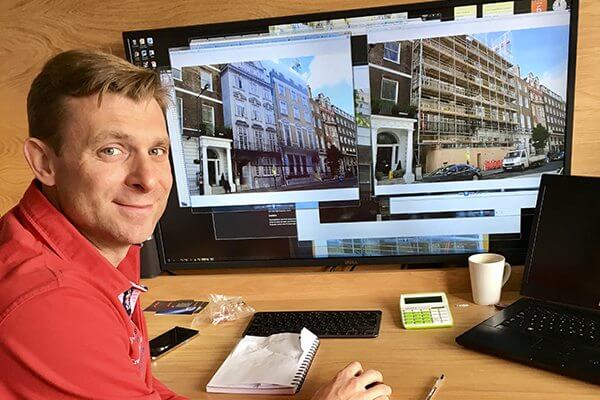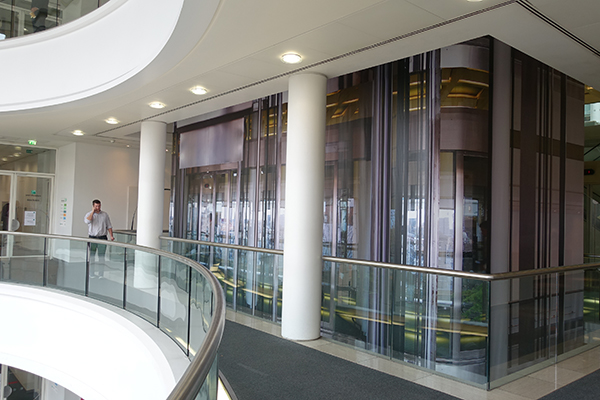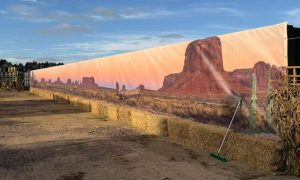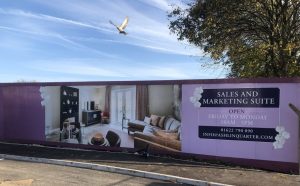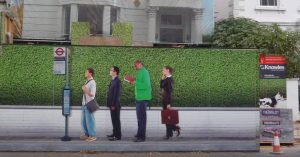Image Report Magazine talks to PPM about Trompe L’oeil building wraps
Fancy working three days a week, from home much of the time, and still turning over £250,000? That’s what Justin Murray is doing, having swapped the grind of running Pyramid Visuals to become a specialist large-format creative print co-ordinator.
In 2011 Justin Murray made a decision – to cut his ties with the print company he had founded at the age of 19 and run for 18 years and to set-up Project Print Management (PPM) – in essence a one-man band, though Murray would argue that it’s all about good supply chain management and relationship building. Six years on and he looks relaxed in his home office, despite being the lynchpin in creative print projects that wow the public as well as his clients. You see, trompe L’oeil building wraps is PPM’s speciality, a niche that calls on all Murray’s experience in large-format print, and in business.“Basically, I set up PPM to coordinate really challenging large-format print jobs – those types of job that people think are impossible. Having gone through an enormous learning curve at Pyramid Visuals, and deciding I no longer wanted the headache of running a production company, I felt I had the knowledge to make it not just technically but economically viable”
Trompe L’oeil building wraps is what I specialise in
Build on reputation
As Murray himself points out, “clients will only use PPM if they are confident they are paying for something that I can deliver on time, to budget, and that they can’t get done faster, cheaper and easier elsewhere.
Creating Trompe L’oeil building wraps
“Coming up with the actual project solution – understanding what is possible – that is really the clever bit, and that’s down to experience and knowing what is technically achievable and in having close conversations with the PSPs and riggers etc to work out what’s feasible overall. It’s about being prepared to work as a team, to think outside the box and come up with something that suits the client’s objectives at the end of the day.
“I’m older and wiser that I was when I was 19, and working three days a week while making money from stimulating projects suits me just fine,” concludes Murray.
Creating an optical illusion
It takes a bit of time to realise that what you’re seeing in this lift shaft is a printed protection screen produced by PPM.
When BNP Paribas realised that it would take ten months to refurbish five glass lifts in two shafts at its London offices the company sought a solution that would keep up appearances – after all, the lifts were located in the atrium – and at the same time protect people should engineers drop any tools etc.
According to PPM’s Justin Murray, “some companies suggested it was not possible, or that an ungainly and costly scaffold structure up the lift shafts was needed. We came up with a solution £60,000 cheaper than the other tendering companies. We could also carry out the work over two weekends compared with six weekends from our competitors.”
So how did PPM do it? “There is a service cradle which runs on a track at the top and around the lifts but inside the glass shafts. Our idea was to fix cables to the cradle track, dropping them down the shaft to form a framework that the printed protection screen could be wrapped around. That itself was digitally printed on a fire retardant solid PVC material and digitally printed on EFI Vutek GS500r, with the hems and eyelets handled on Forsstrom TDW 200-1000 high frequency welder.
Specialist engineers were employed by PPM to carry out the design calculations to prove the installation method would work and be fit for purpose.
Once riggers employed by PPM installed the wire guides vector templates were created for the trompe L’oeil artwork onto. Assisting the BNP Paribas in-house creative team PPM produced this final optical illusion, with rope access engineers hanging at the top of the 31m lift shaft to winch the 25m high x 18m wide wrap into position.
For the actual article please visit Image Reports online Magazine
For more on PPM’s print projects or Trompe L’oeil building wraps please visit our blog.

